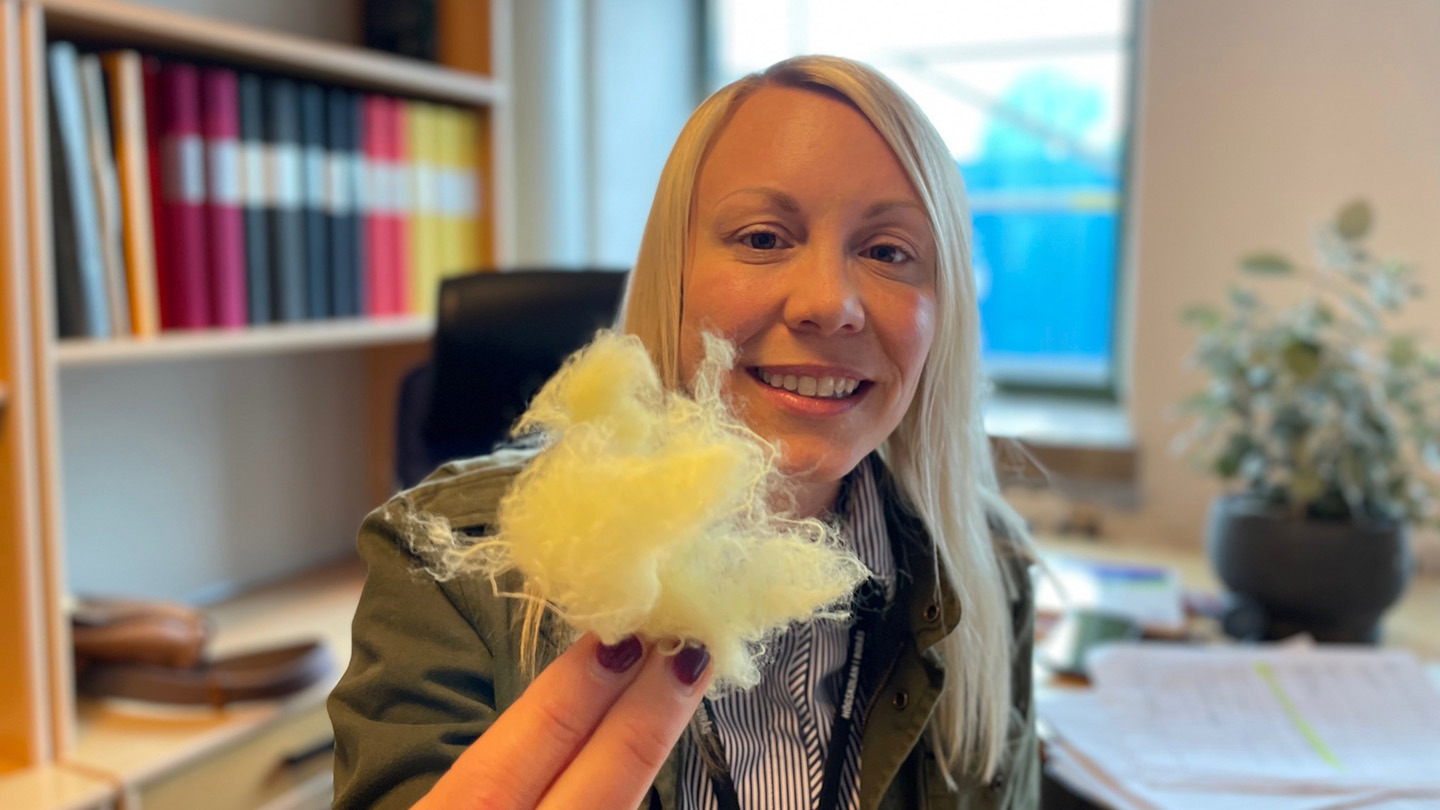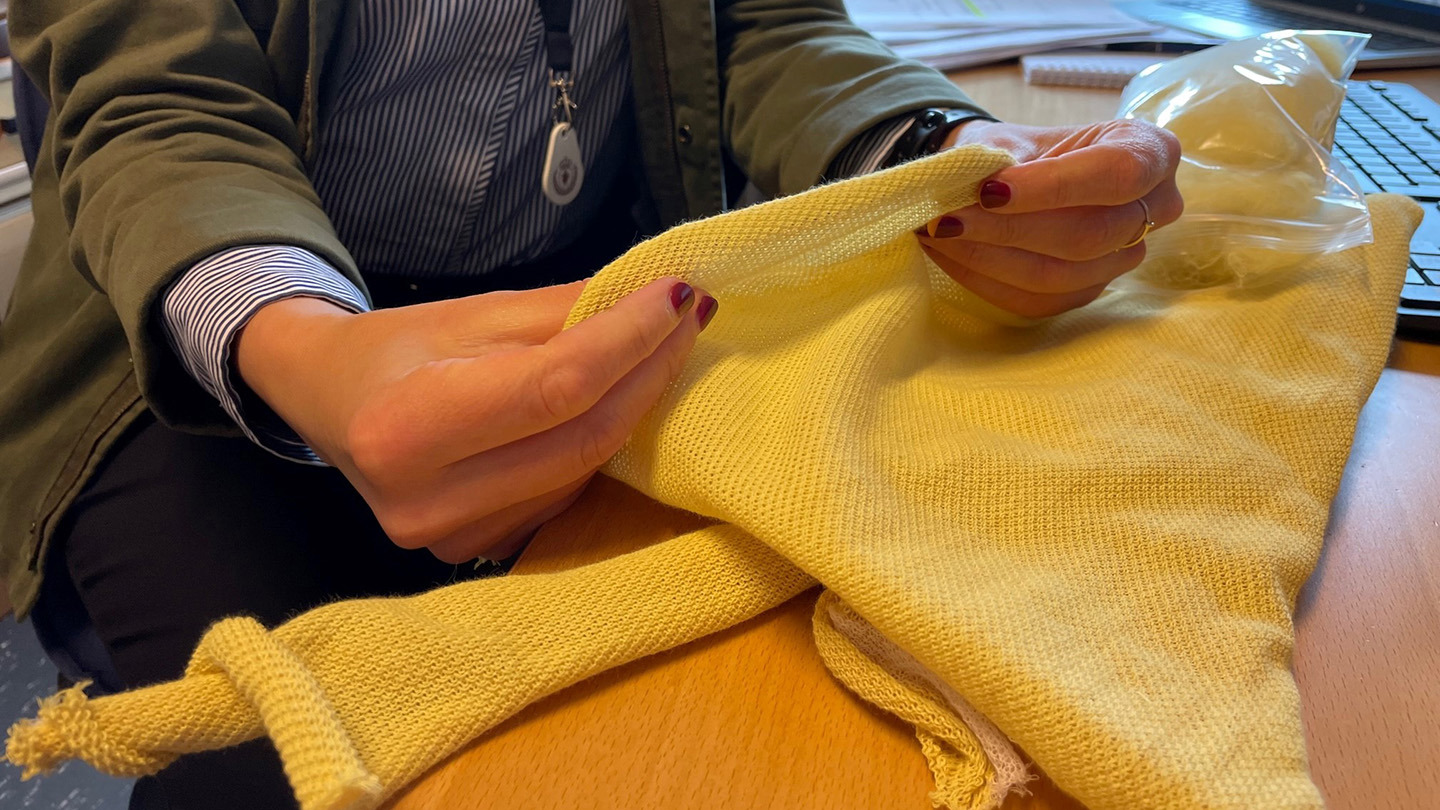University strengthens research on high-performance textile fibres
2023-06-08
Maria Persson, Senior Lecturer and researcher at the Department of Textile Technology, will work with product development with a focus on textiles in extreme environments and high-performance fibres in medical technology research, as well as teach on the new Master's programme that starts in the autumn of 2023.
During her ten years as a researcher in both academia and industry, she has focused on polymeric materials that can be used as reinforcement in bone regeneration or in protective clothing that resists solids, heat and arcs.
Most recently, she has been working on research at the DSM company in the Netherlands on how to use high-performance fibres in the biomedical field.
“I investigated a type of fibre (UHMWPE) that is very strong for its weight and can be used as a suture thread, but the material can also be used for hip replacements or textile heart valves, in the form of a fabric. I have also worked on projects on coatings to get textile materials to bind to bone, for example to attach ligaments to bone as required in a rotator cuff rupture or ACL reconstruction," she said.
Focus on fibres stronger than steel
For a few years, she has also worked for a company in Japan, Teijin, also with high-performance fibres and technical textiles. The focus has been on aramid, which is stronger than steel, lightweight and highly heat-resistant.
Maria Persson is not new to the University of Borås. She first studied to be a textile engineer, then went on to a Master's degree and then started her research career. In 2011, she worked on Polymer Technology projects at the university. She then went on to do her doctorate at the University of Oulu in Finland, where she investigated how textile materials can be used to support the generation of bone mass, for example in the case of bone fractures or the absence of skeletal elements in various medical diseases.
The research on high-performance fibres that Maria Persson is interested in is also of interest to space research. And in fact, she started a collaboration with the International Lunar Exploration Working Group (ILEWG) to develop a fabric that can block micrometeorites. However, this collaboration came to a halt during the COVID-19 pandemic.
Recycling of high-performance fibres
Most recently, she will be working on a circular project that involves recycling high-performance fibres from existing end-of-life products, giving the fibres a longer life.
“In products made from textile materials, the individual fibres are densely packed and the challenge is to separate them into individual fibres with the best possible retention of properties, in order to reuse them in new products. High-performance fibres such as aramid can then also be used with other materials to reinforce them. Or to produce various lightweight products.”
Interesting for industry
It is now hoped that industry and business will see the benefit and interest of this research and want to be involved in developing future textile solutions where sustainability in the form of increased lifespan is in focus.
Are there any disadvantages to using materials like aramid fibres?
“Almost all synthetic fibres have the disadvantage that they do not break down in nature. But aramid and other high-performance fibres have such good properties that it is therefore valuable to recycle instead of throwing away in landfills. "We will start investigating aramid fibres, but in the long term we also want to take a closer look at whether carbon fibres and other similar materials can be recycled," concluded Maria Persson.
Professor Nawar Kadi, who leads the Advanced Textile Structures research group, comments on her addition to the research group.
“Maria Persson has a fascinating industrial background in addition to her doctoral research. Her expertise in developing technical textile fibres is a significant addition to our research team. She has already started the project to recycle high-performance fibres and is developing new research projects in our field," he said.
Read more
Read more about the research in the Advanced Textile Structures research group
Read more about Master Programme (Two Year) in Technical Textile Innovation
Solveig Klug



